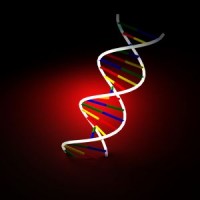Continuing to follow the literal Genesis account of creation (Genesis 1:1-2:3), which is what Professor Barr said the text is intending to convey, the sequence of days and their created elements are as follows. On day one, God made a watery, formless mass along with light, but this light was not the sun. (More on [&hellip
There are arguments for God’s existence such as the cosmological, teleological, and moral order arguments. Simply stated, these arguments are: since everything has a beginning, who started it? Since every design has a designer, who designed it? And since every law has a law-giver, who gave the law? We can know God exists from the [&hellip
Is God simply the universe, as pantheists believe? No, Genesis 1:1 clearly shows the difference between God and creation. “In the beginning God created the heavens and the earth.” This verse is known so well that we fail to recognize how radical it is! God is not part of the world, as in other religion’s [&hellip
Before we look at the third argument for God’s existence, let’s review the first two. Cosmology and teleology are important to remember. Everything has a beginning. Every design has a designer. God designed and created all things. All people can know that God exists. That’s why Romans 1:20 says the following: “For since the creation of [&hellip
Continuing to deal with the issue of God’s existence, we turn to another argument: teleology. Teleology is the study of design and purpose. Every design has a designer. A car or laptop doesn’t just appear out of nowhere—they are conceived in the mind of a designer and constructed out of materials. So it is with [&hellip
When it comes to worldviews, everyone has to start somewhere. Our worldview “map” needs to have a starting point, so assumptions have to be made. Christianity states that God exists, and that He reveals Himself through His creation and His Word. A legitimate question to ask would be, “How does one know that there is [&hellip
Continuing with the concept that mutation is the key to evolution, in order to show that evolution is true, evidence is presented that reveals that mutations occur. For example, insects become resistant to certain pesticides. Since these bugs are bug-spray proof, this proves evolution. Not so fast—this is an example of micro-evolution, not macro-evolution. Remember [&hellip
















0
Comments
Add